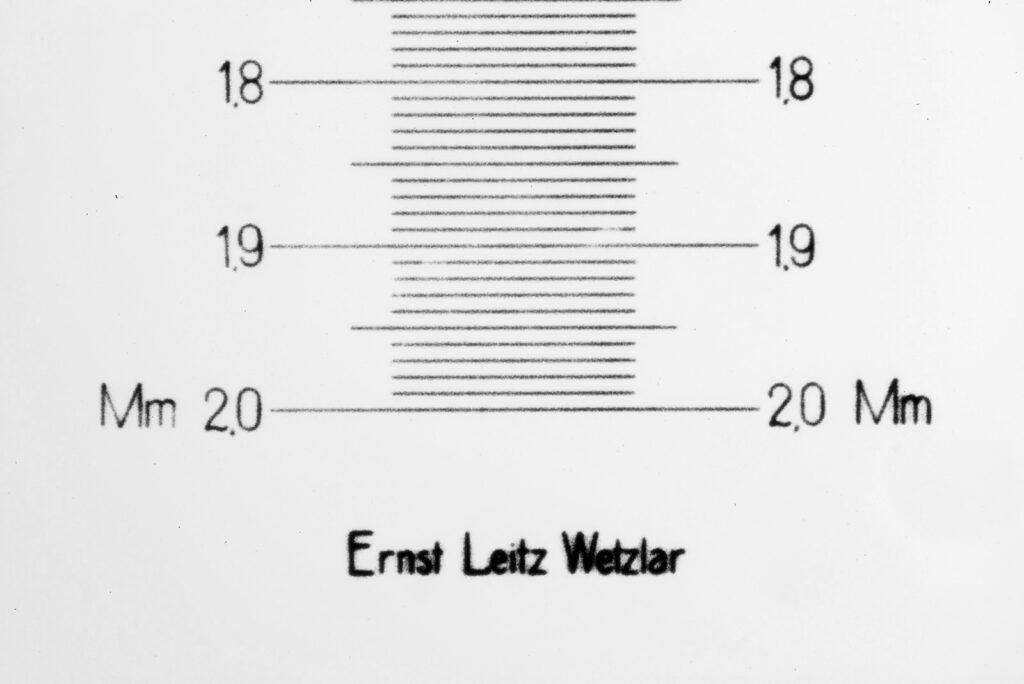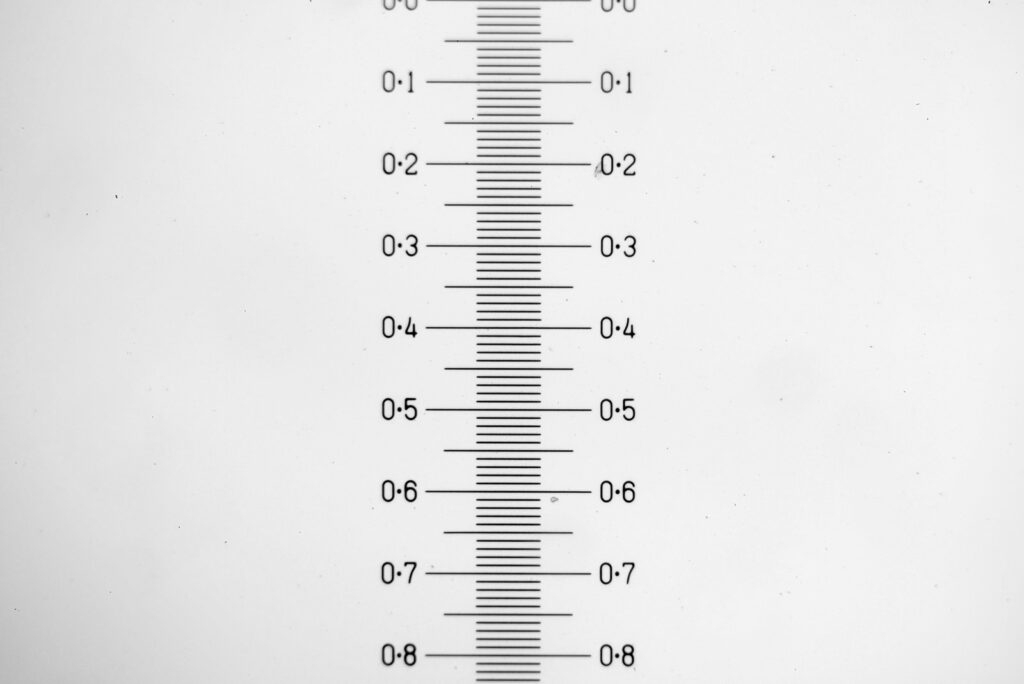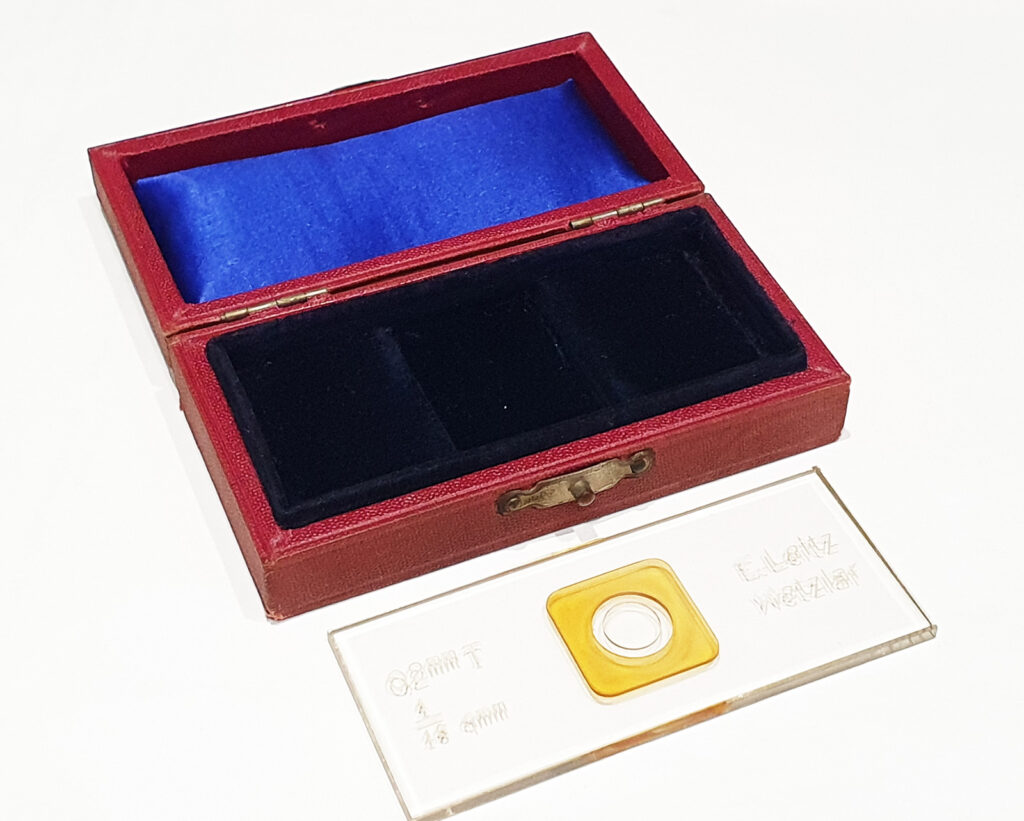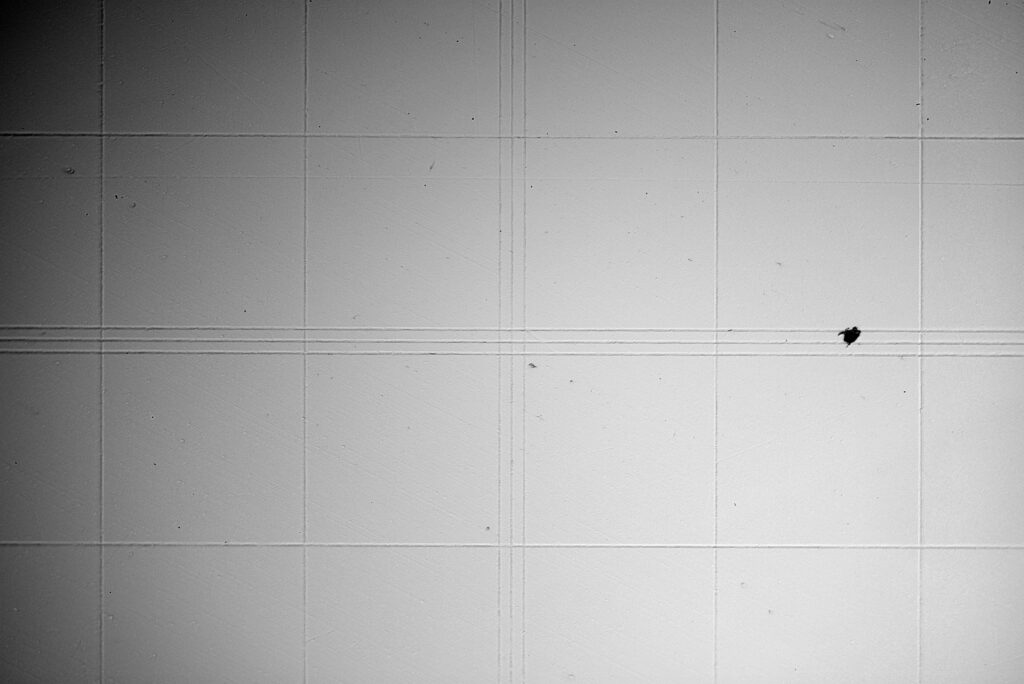With microscopy it is important to know how big the object is that you are imaging. The simplest way to do this is to use a stage micrometer (also called a graticle or graticule). These are small rulers and designed to be imaged using the same optics setup as being used to image the subject. The ‘pixels per micron’ can then be calculated and used to make a scale bar on the image of the subject. Today I’ll show you a couple of the ones I use. But first a nice image from an old Leitz one showing their name as well as 250µm of the micrometer.

The ones I tend to use on a daily basis were made by Graticules Ltd in the UK (now know as Graticules Optics Ltd). I have a 2mm one with 10µm divisions) and a smaller one which has 2µm intervals which I use for for higher magnification objectives. Both of these were bought second hand from ebay for about £30 to £40. Here’s what the 2mm one with 10µm divisions looks like.

Using a 10x Olypus UVFL objective this is what the scale bar from the Graticules Ltd slide looks like.

In the image above, each larger division is 0.1mm (100µm) with 10µm smaller divisions between the larger ones. I also picked up an antique Leitz one, which is also 2mm long and has 10µm intervals. Here’s what that slide looks like.

Interestingly the Leitz one has a coverslip attached which the Graticules Ltd one does not. Here is an image of the micrometer scale on the Leitz slide using the same setup as for the Graticules Ltd slide above.

As can be seen from the images of the micrometer, both slides are giving the same scale – about 830µm from the top of the image to the bottom. The Leitz one also has the makes name on it below the scale as shown in the first image in this post.
I also bought another Leitz one which I thought was a micrometer, see below.

Turns out this wasn’t a stage micrometer at all, it was actually a haemocytometer, used for counting cells (you can read more about them here). Here’s an image from the slide.

I should also point out that there are plenty of new, cheap, stage micrometers available from places like ebay, however I have no idea how accurately made they are, which is why I tend to look out for older, second hand ones. In addition to these types of glass ones, they are also available on metal or opaque substrates for reflection microscopy.
The measurement side of things tends to often go unnoticed when compared with some of the beautiful subjects which can be imaged, but it is an important aspect of microscopy. As always, thanks for reading, and if you’d like to know more about my work I can be reached here.
